Pop-up card : former Akita Prefectural Akita Library
The pop-up card of the former Prefectural Akita Library was completed.
I designed the pattern, but to be honest, it was a little difficult to fold.
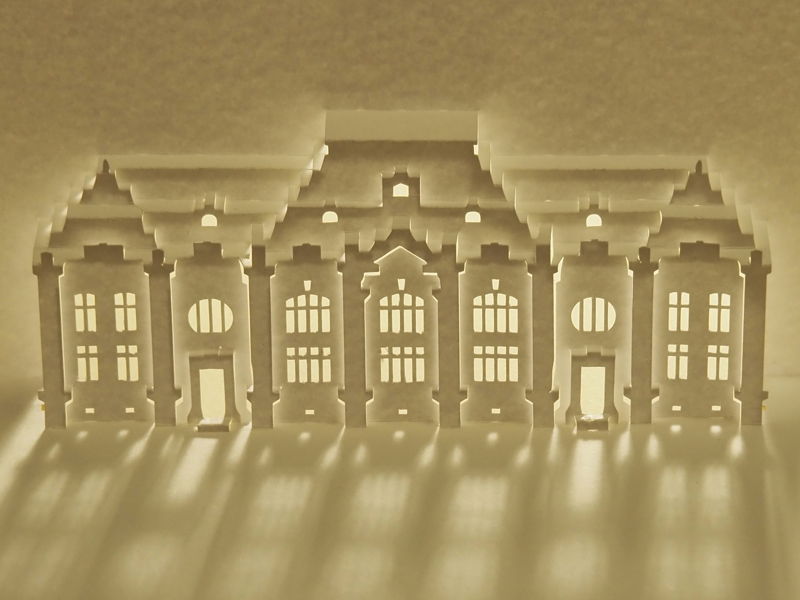
Since it is difficult to fold, it does not seem to be suitable for publishing the pattern.
I am going to make other cards and then publish the one that is easy to fold.
So the main site will be updated later.
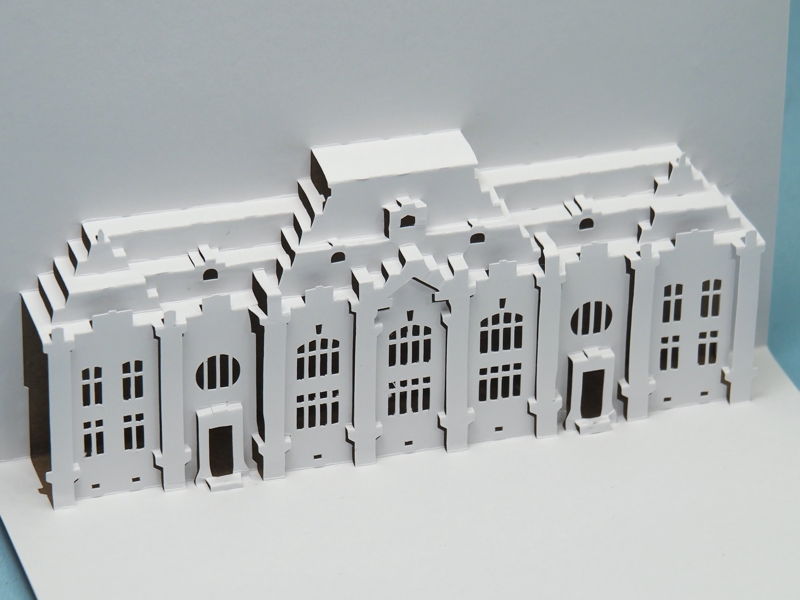
Oh, I noticed that the cutout is not cut properly. Even though this is the front center window.
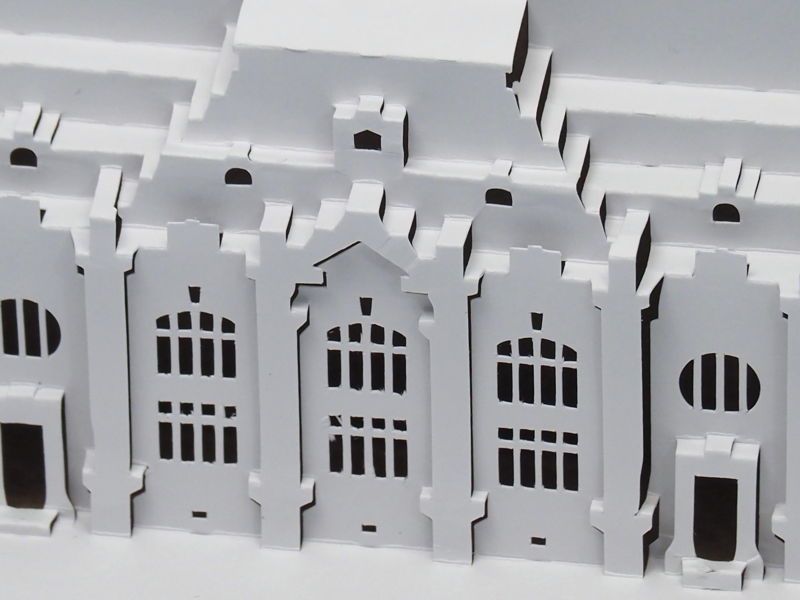
I am re-posting a photo I posted earlier so that you can compare.
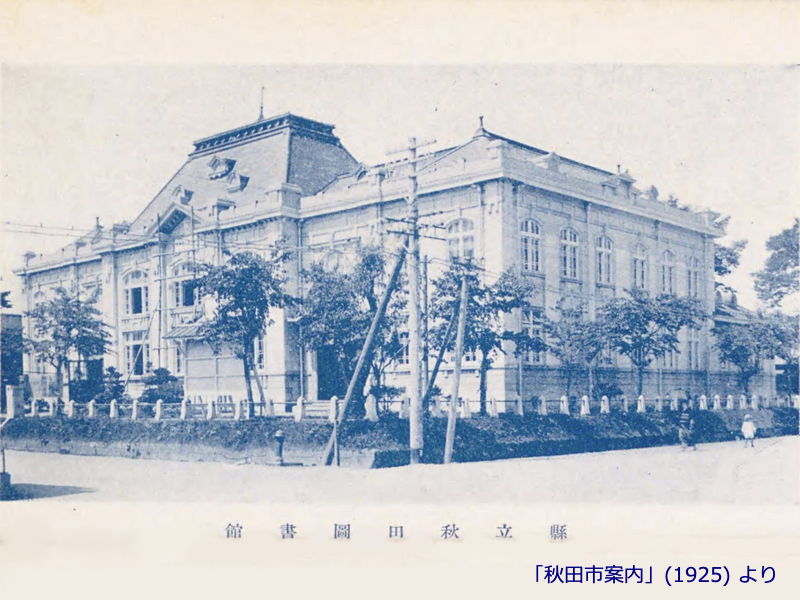
The photo was taken from the “Akita City Guide" published in 1925.
I hope I was able to give a little of the feeling of a glamorous building when it was built.
Now that the card is completed, the article of the Akita Prefectural Library built in the Taisho era has come to an end.
However, in my previous article, I wrote only negative things about the library, such as the need for repair work and the lack of storage space for books. I feel it is pity, so I would like to end this article with an evaluation of this library.
The following is based on the “History of Education in Akita Prefecture, Volume 6 (General History 2)" (1986).
The Taisho Era was a time when the number of libraries in Japan increased: from 445 in 1911 to 3,904 in 1925.
It was during this period that the second Akita Prefectural Akita Library was built.
Construction began in the fall of 1915 and was completed in October 1918.
One of the features of the library was the addition of a children’s reading room and a women’s reading room, in addition to the general reading room.
In 1919, the Akita Library lowered the age of admission to the library from 12 to 10. As a result, it became that the largest number of visitors were students, followed by children.
The number of female users also rose from about 5% in 1914 to 13% in 1926.
Another of the library’s attempt was the establishment of an auditorium and display room for social education activities. This is a feature that the former Akita Library did not have.
Akita Library has a large number of books, and according to a 1921 survey by the Ministry of Education, only six libraries in Japan had collections of more than 50,000 volumes, and Akita Library was one of them. (70,330 volumes at the time.)
At the same time, the Ministry of Education introduced seven prefectures with excellent library activities, and Akita was included in the list.
In 1922, the Ministry of Education announced its policy of positioning libraries as the core of social education programs, and in response to this policy, the Libraries Congress of the Nation also announced its policy of opening libraries to social education activities.
In 1924, the Akita Library set the following goals: (1) popularize libraries, (2) expand social education activities, (3) provide systematic assistance to self-educated people, and (4) strengthen its function as a local library.
Akita Library has implemented.
(1) Civilianization of the library
* The newspaper reading room was rearranged to the front of the building to make it easier for the public to enter.
* The meeting room was converted into the assembly room by installing blackout curtains and display equipment, making it easier to use for workshops and exhibitions.
* Held events for children. ex) A camping library in Senshu Park, A seaside library at the beach.
* Implementation of a traveling library for companies and businesses, (there had been a traveling library before, but the number of users had been declining as municipal libraries were being enhanced).
(2) Expansion of social education activities
* Expansion of social education activities. Commercial lectures, lectures, storytelling sessions, exhibitions, etc.
* Cultivate citizen’s activity organizations. Women’s book club, etc.
(3) Assistance for self-study
* A special room in the library has been renamed the “Study Room". It could be used as a dedicated study room, and members could receive direct guidance from specialists
(4) Strengthening of functions as a local library
* Publication of library bulletins (1926-). Distributed to schools, government offices, newspapers, and various organizations.
* Reference Service. This activity started in 1921. At the time, only a few libraries in Japan were engaged in this activity.
The above is a description of the activities of the Akita Library in the Taisho era.
I think it’s great that they’ve been providing reference services since that time.
It feels better to conclude by noting these evaluations.
After reading this, I feel like my card made a better impression, too.
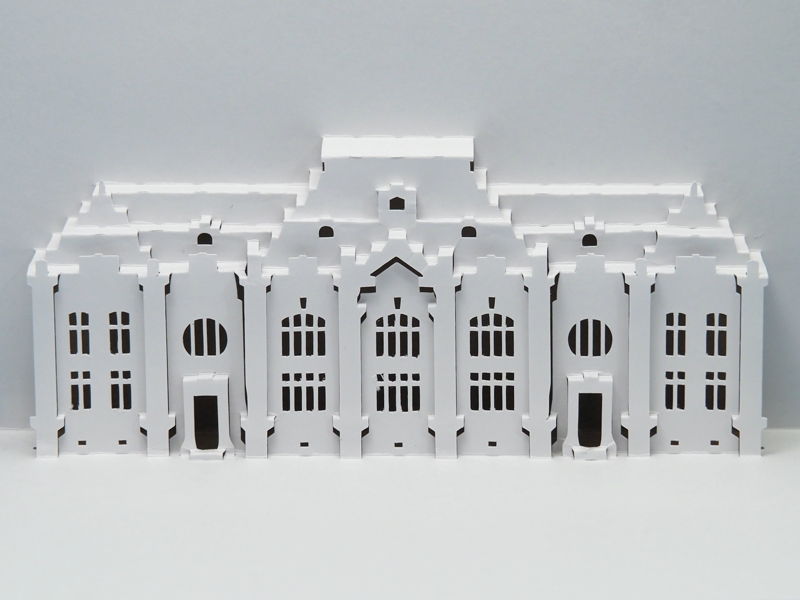
[Reference] (written in Japanese)
“History of Education in Akita Prefecture, Volume 6 (General History Part 2)" (Akita Prefectural Board of Education/1986)
[Related articles]
“After the Former Prefectural Akita Library" (2024.07.02)
“Opening of the Prefectural Akita Library (second generation)" (2024.06.30)

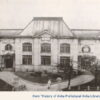
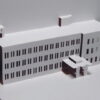
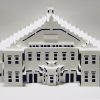
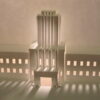
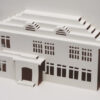
Discussion
New Comments
No comments yet. Be the first one!